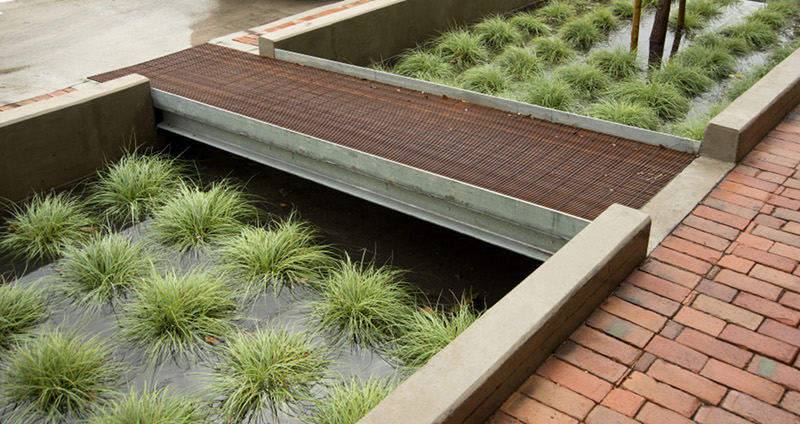1. Johns Manville ENRGY 3.E Halogen-Free Polyiso Insulation
Johns Manville is the first manufacturer to sell a polyisocyanurate roofing insulation not containing TCPP, or Tris (1-chloro-2-propyl) phosphate, the halogenated flame retardant used in polyiso and spray foam.
2. Organic Furnishings from Ekla Home
These furnishings are made from natural latex and do not require chemical flame retardants.
3. KI Chair with AirCarbon Plastic
The materials that go into the KI Chair come from agriculturally-sourced methane rather than petroleum, which makes the chair carbon-negative.
4. FocalPoint Bioretention System
This filtration systems provides the performance of natural storm water filtration on a very small footprint.
5. Multistack Magnetic Levitation Chillers with Danfoss Compressors
These chillers cool offices, schools, and large commercial buildings; they are energy-efficient and eliminate the need for mechanical seals, gears, pumps, and many other conventional components.
6. Fluid-Applied Cat 5 Air Barrier System from Prosoco
The parts that make up these air barriers are based on the high-performance "hybrid" polymer chemistry, which lacks solvents and isocyanates; in addition, the removal of phthalate plasticizers makes them eligible for use in Living Building Challenge Products.
7. Clean Energy Collective
The collective develops locally-sited photovoltaic facilities across the U.S. and engages with local utilities so that local people can purchase and own PV panels within a shared array.
8. Cascadia Clip Thermal Spacers
The Cascadia Clip offers support for cladding over insulation, and it decreases thermal bridging more effectively than conventional methods.
9. Marvin Windows with U.S. Passive House Certification
Marvin Windows is the first major American window manufacturer to issue a Passive House Institute U.S.-certified window. These windows are available with FSC-certified wood.
10. USAI Lighting Color Select Tunable Lighting
This product blends the efficacy of LEDs with the ability to provide users complete control over the color and intensity of their interior lighting.
Read BuildingGreen's full report here.
Related Stories
Building Team Awards | Apr 10, 2015
New arts venue reinvigorates Virginia Tech's campus
The STV-led Building Team creates a world-class performance and arts venue with learning and entrepreneurial dimensions.
BIM and Information Technology | Apr 9, 2015
A carboard box by Google can bring virtual reality to architecture
The global search engine giant has launched a new product, Google Cardboard, that easily allows users to experience virtual reality.
Building Team Awards | Apr 9, 2015
Multifaced fitness center becomes campus landmark
A sloped running track and open-concept design put this Building Team to the test.
Building Team Awards | Apr 9, 2015
Nation's first LEED-certified bus depot
A bus garage in Harlem shows that even the most mundane of facilities can strut its environmentally sensitive stuff.
Building Team Awards | Apr 9, 2015
Setting the bar for port-of-entry design
Whenever you eat a tomato from Mexico, there’s a one-in-three chance it came through this LEED Gold gateway.
Building Team Awards | Apr 9, 2015
Big D’s billion-dollar baby: New Parkland Hospital Tops the Chart | BD+C
Dallas’s new $1.27 billion public hospital preserves an important civic anchor, Texas-style.
Building Team Awards | Apr 9, 2015
IPD-driven fusion facility serves science and student life in Chicago
In dire need of modern science labs and a student union, North Park University built both—in the same building.
Building Team Awards | Apr 9, 2015
‘Prudent, not opulent’ sets the tone for this Catholic hospital
This Building Team stuck with a project for seven years to get a new hospital built for a faithful client.
Building Team Awards | Apr 9, 2015
9/11 museum triumphs over controversy
The Building Team for this highly visible project had much more than design, engineering, and construction problems to deal with.
Building Team Awards | Apr 7, 2015
Unique test facility will help make wind power more feasible
A new facility at Clemson University makes it possible to test the huge stresses that large-scale wind turbines must be able to withstand.

















